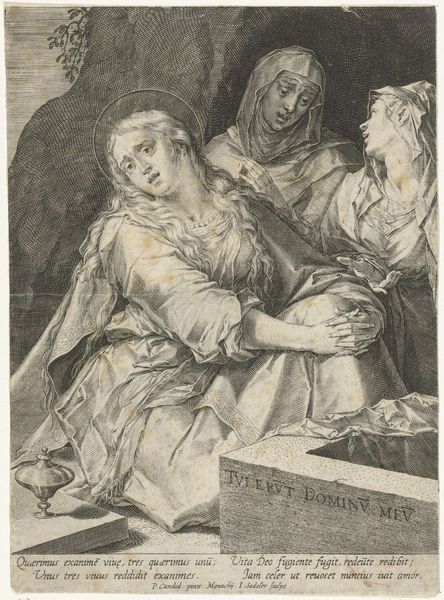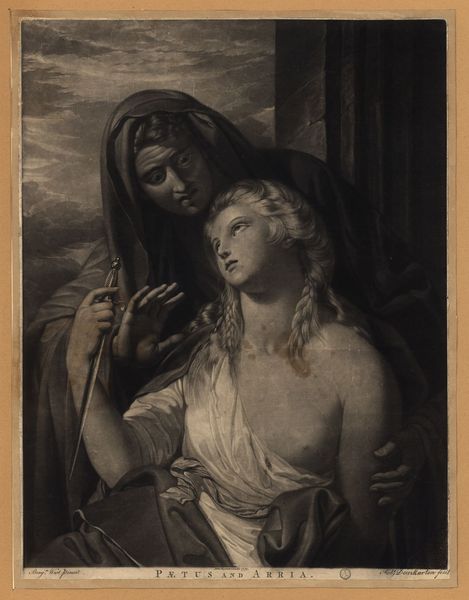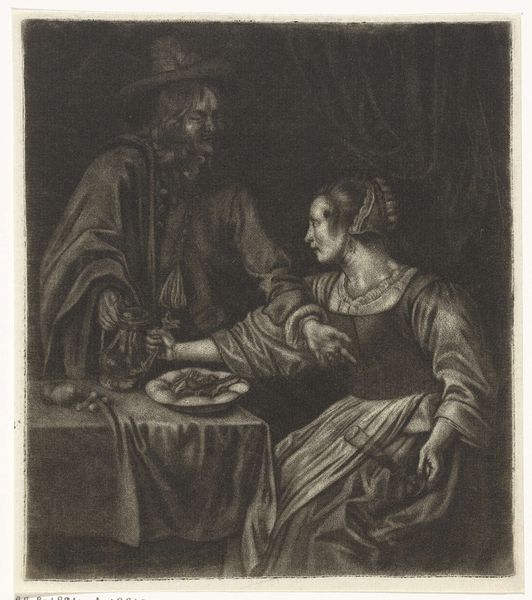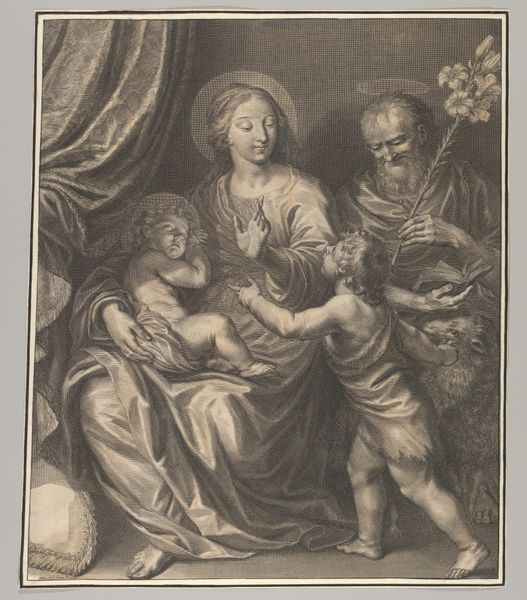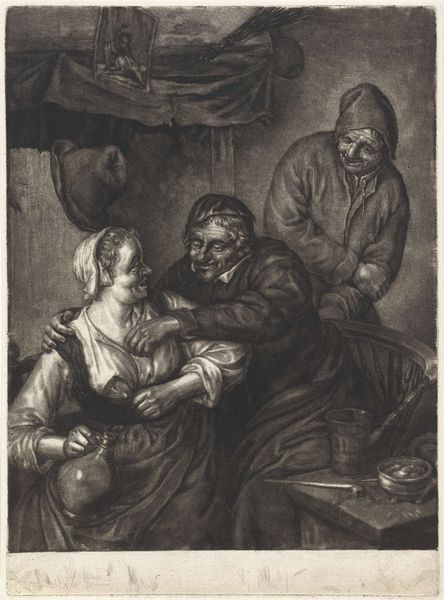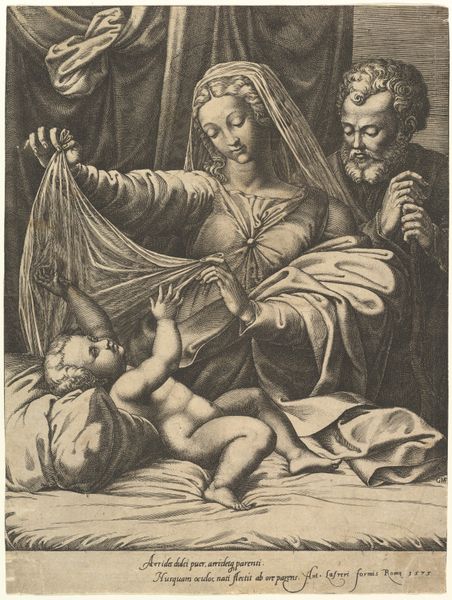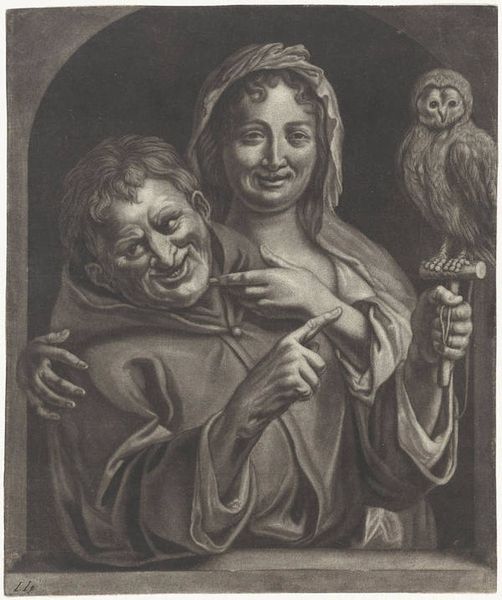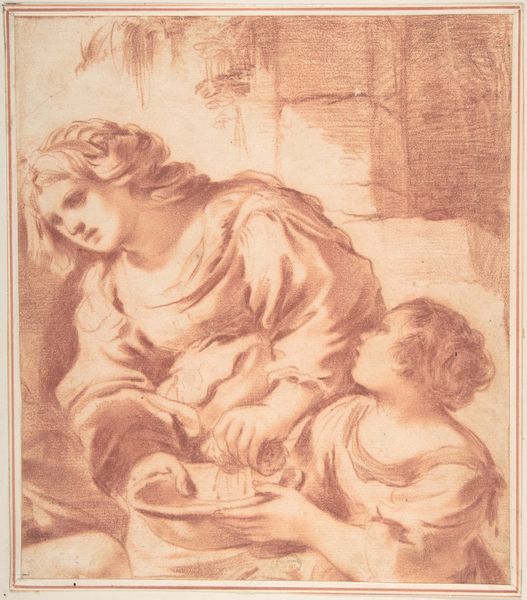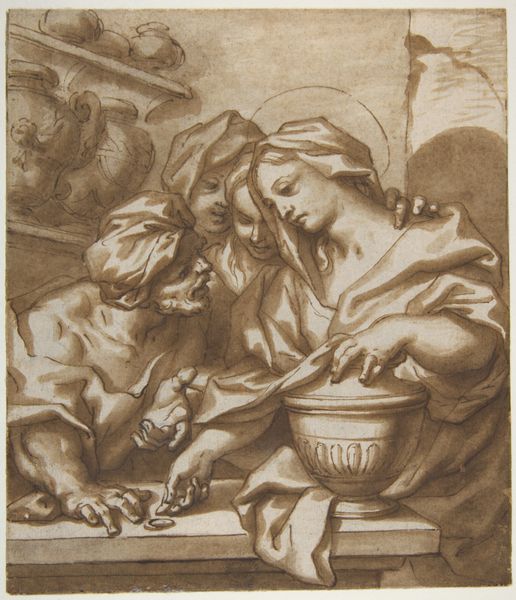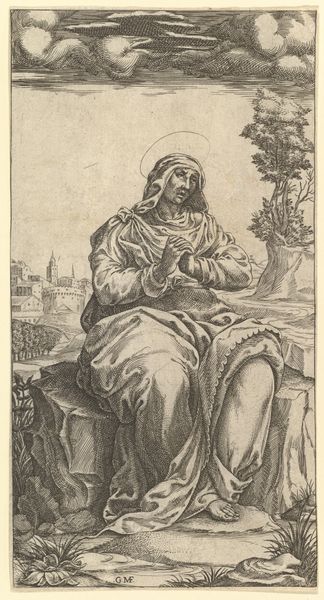
painting, oil-paint
#
portrait
#
allegory
#
baroque
#
painting
#
oil-paint
#
mannerism
#
figuration
#
oil painting
#
chiaroscuro
#
christianity
#
genre-painting
#
history-painting
#
italian-renaissance
#
portrait art
Copyright: Public domain
Editor: This is Guido Reni’s "Salome with the Head of John the Baptist," from 1635, made with oil paint. The most striking element is the golden platter itself, drawing the eye to John's head, but I'm curious, what does this composition tell us about production? Curator: It's fascinating to consider the layers of labor involved here, from the mining of the pigments used in the paint to the crafting of the canvas itself. What does Reni's emphasis on rich fabrics and jewels suggest to you about the consumption habits of his patrons? Editor: That the intended audience probably wasn't suffering in poverty, or didn't care if others did, perhaps? All those luxury items… And how might Reni's own studio and workshop structure, the division of labor within it, have influenced the final artwork, you think? Curator: Exactly. Consider the role of assistants in preparing the canvas, grinding pigments, or even painting less critical areas. And the global trade networks that facilitated access to certain pigments! How does this impact our view of artistic genius and individuality? Editor: It makes me consider the "genius" of the old masters more as team leaders than solitary creatives. What about the meaning and significance of that golden platter, the tool which enacts a significant transfer of authority, so to speak? Is this choice just ornamental? Curator: Think of that platter as a crafted object, imbued with value both literally and symbolically. Its creation, ownership, and use speak to the power structures and economic realities of the time. It is meant for a unique purpose which dictates all of its use. Where might it go afterward? Editor: I suppose, the artistry and meaning are bound inextricably together with the socio-economic conditions of its production. This really gives me a fresh lens through which to appreciate not just the subject but also how, and why, and for whom it was brought into being. Curator: Precisely! By examining the materials, processes, and context, we move beyond aesthetics to a deeper understanding of the artwork's place within a broader system of making and owning things.
Comments
No comments
Be the first to comment and join the conversation on the ultimate creative platform.
